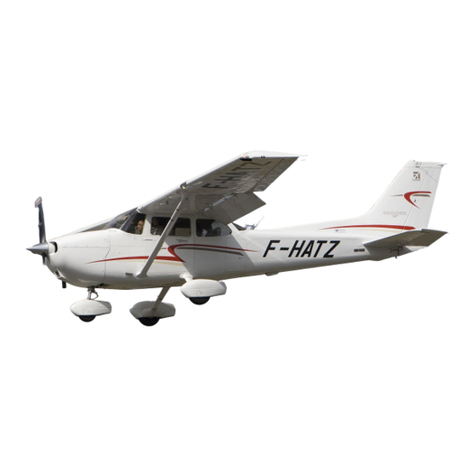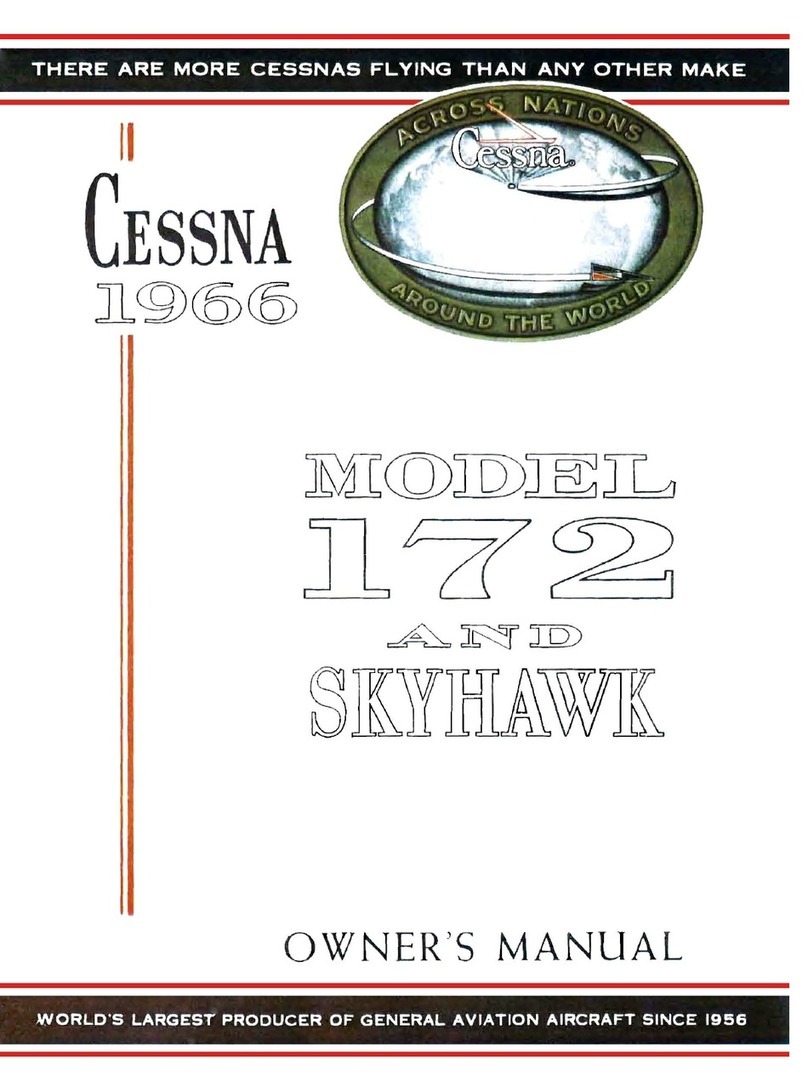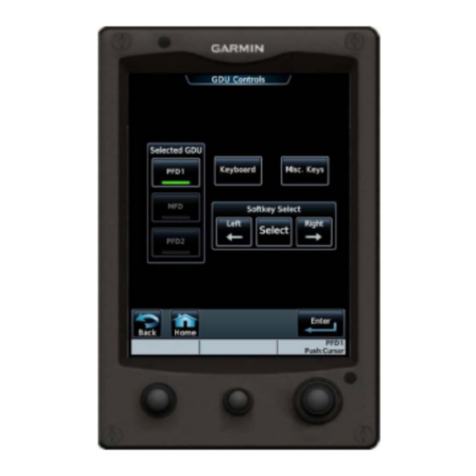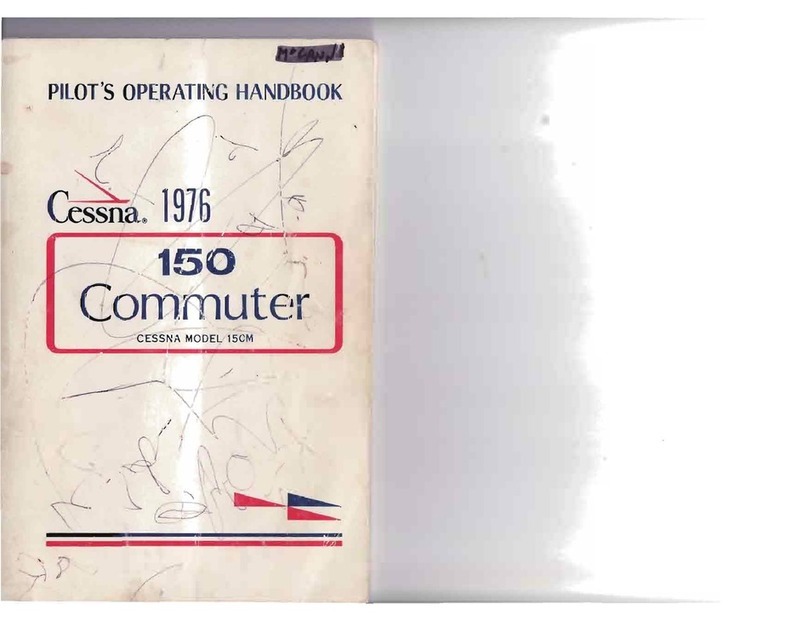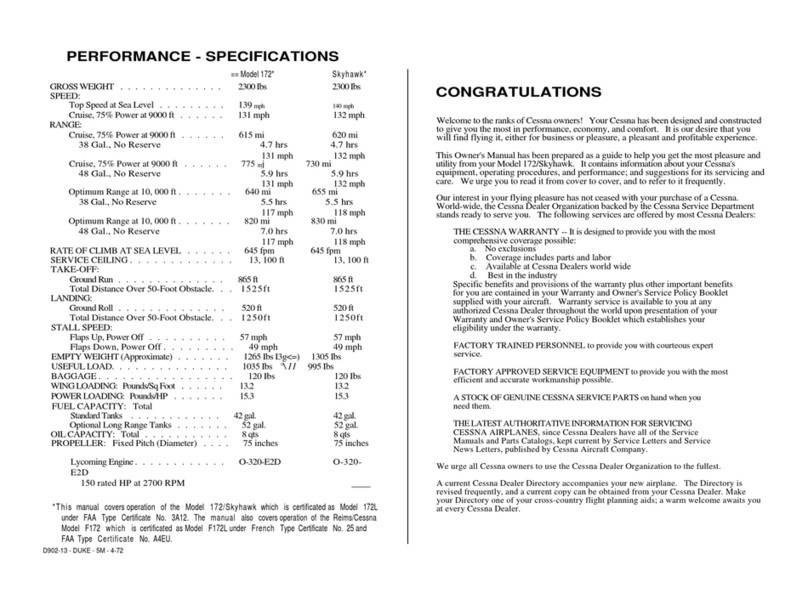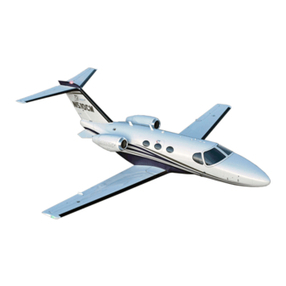exterior inspection, 1-2 Engine,
fuel system, 2-2 before starting, 1-4 1
instrument panel, 1-8 instrument markings, 4-2 Ms
loading arrangements, 4-5 oil, inside back cover -
maximum glide, 6-10 operation limitations, 4-2
principal dimensions, ii starting, 1-4, 2-10 OPERATING CHECKLIST
radio selector switches, 7-4 Engine Failure,
taxiing, 2-11 after take-off, 3-1
Dimensions, Principal, ii during flight, 3-1
Disorientation in Clouds, 3-5 Enroute Climb, 1-5, 2-14 One of the first steps in obtaining the utmost performance, service,
emergency let-downs through maximum performance, 1-6 and flying enjoyment from your Cessna is to familiarize yourself with
clouds, 3-5 normal, 1-5 your aircraft's equipment, systems, and controls. This can best be done
executing 180° turn in Equipment, Cold Weather, 7-1 by reviewing this equipment while sitting in the aircraft. Those items
clouds, 3-5 Excessive Rate of Electrical whose function and operation are not obvious are covered in Section II.
recovery from spiral dive, 3-6 Charge, 3-9
Ditching, 3-3 Executing 180° Turn in Clouds, 3-5 Section Ilists, in Pilot's Checklist form, the steps necessary to
Exterior Inspection Diagram, 1-2 operate your aircraft efficiently and safely. It is not achecklist in its
Exterior Lighting, 2-6 true form as it is considerably longer, but it does cover briefly all of the
points that you should know for atypical flight. Amore convenient plastic
Eenclosed checklist, stowed in the map compartment, is available for
Fquickly checking that all important procedures have been performed.
Economy Mixture Indicator, 2-16, Since vigilance for other traffic is so important in crowded terminal
7-11 File, Aircraft, 5-5 areas, it is important that preoccupation with checklists be avoided in
Electrical Power Supply System Fires, 3-3 flight. Procedures should be carefully memorized and performed from
Malfunctions, 3-8 electrical fire in flight, 3-4 memory. Then the checklist should be quickly scanned to ensure that
excessive rate of charge, 3-9 engine fire during start on nothing has been missed.
insufficient rate of charge, 3-9 ground, 3-3
Electrical System, 2-3 engine fire in flight, 3-4 The flight and operational characteristics of your aircraft are normal
ammeter, 2-5 Flight in Icing Conditions, 3-6 in a11 respects. There are no "unconventional" characteristics or opera-
circuit breakers and fuses, 2-6 Flyable Storage, 5-5 tions that need to be mastered. AII controls respond in the normal way
ground service plug receptacle, Forced Landings, 3-2 within the entire range of operation. All airspeeds mentioned in Sections
7-1 ditching, 3-3 I, II and III are indicated airspeeds. Corresponding calibrated airspeed
master switch, 2-3 emergency landing without may be obtained from the Airspeed Correction Table in Section VI.
over-voltage sensor and engine power, 3-6
warning light, 2-5 precautionary landing with
schematic, 2-4 engine power, 3-2
Emergency Landing Without Engine Fuel System, 2-1
Power, 3-2 capacity, inside back cover
Emergency Let-Downs Through fuel grade, inside back cover
Clouds, 3-3 fuel quantity indicators, 4-3
Emergency Locator Transmitter long range fuel tanks, 2-3
(ELT), 3-9 schematic, 2-2
ELT operation, 3-11 tank sump quick-drain valves,
Empty Weight, inside front cover 2-3
Index-2
1-1

